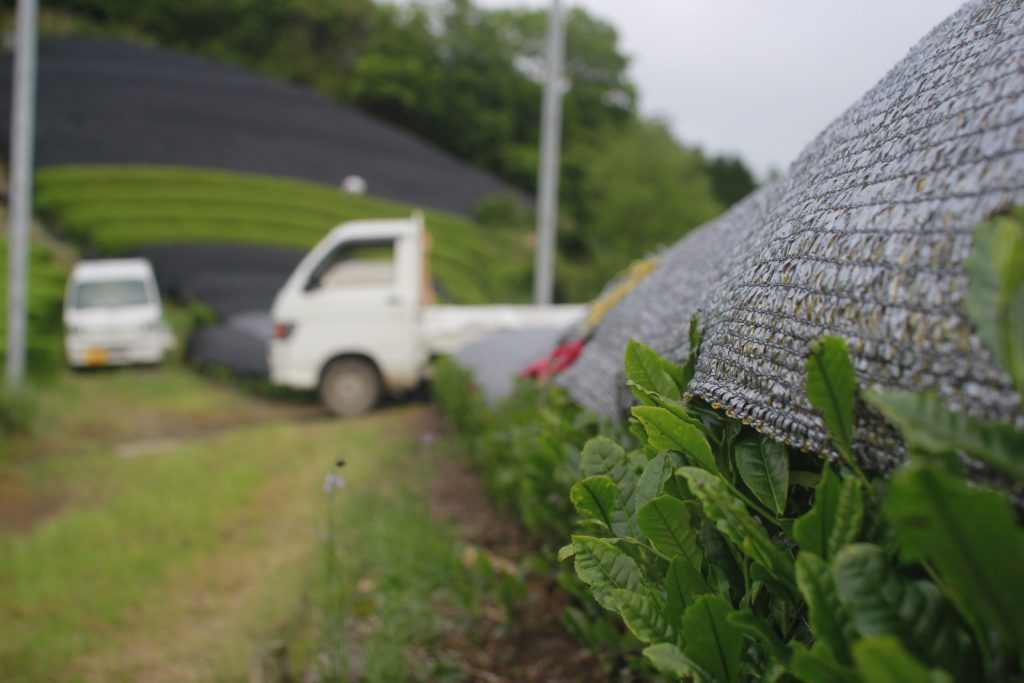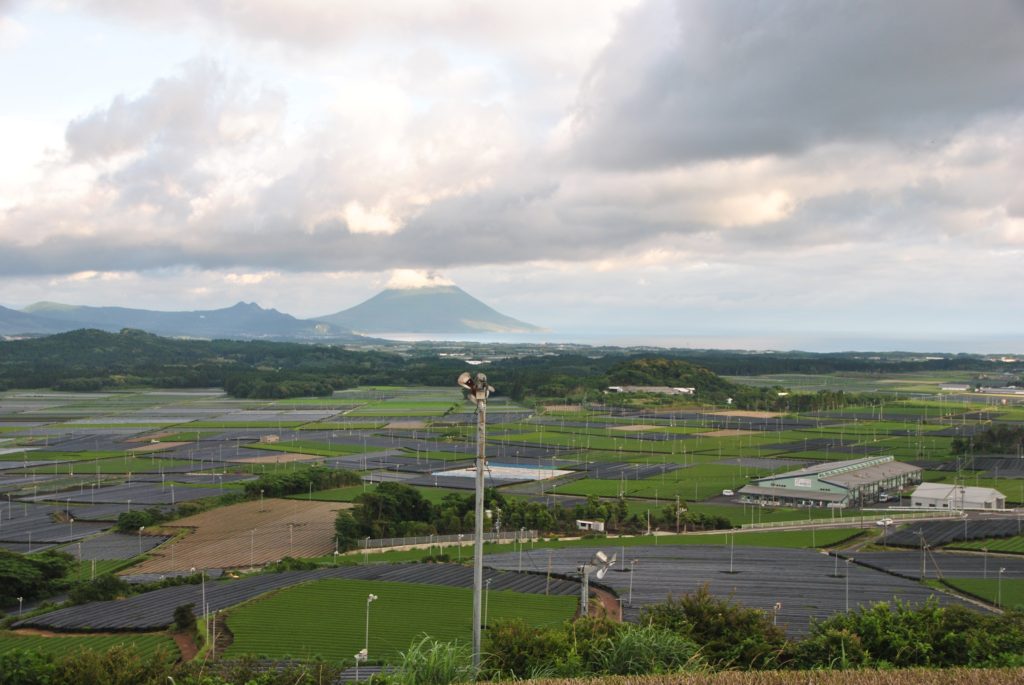If April is the month for first harvest and shincha, May is when shaded spring teas are harvested.
What is a shaded tea or, as they are called in Japanese, “kabuse” かぶせ?
The world kabuse かぶせ literally means cover and a shaded tea means that its cultivation method involves shading the tea plants before harvesting. This is the same method shared with two other kinds of Japanese teas that are tencha and gyokuro, but for a shorter time instead.
Let’s see how it is done!
In the old days the shading was made by natural dry bamboo reeds and rice straws. However, those materials have become less common due to the fact that the reeds and straws need to be replaced every year and the preparation takes time and effort. Nowadays the most common way is using synthetic black covers that can be applied repeatedly every year. The plants are literally covered directly, while for tencha and gyokuro, a higher structure is used.

At first covering the plants was used to protect the tea leaves from frost and cold, until it was discovered that it actually provoked a change in taste. With this method, in fact, direct sunlight on the plants is reduced and the photosynthesis slows down: this causes different effects on the plant. One is a higher content of chlorophyll, therefore the leaves will have a much darker and intense green colour. The other effect is more of a specific amino acid called L-theanine.
Theanine gives the plant a sweeter taste and also a stronger umami flavour; moreover, it is the responsible for a direct relaxing effect on our brain.
How long are the tea plants covered for? It depends of the farmer, really; and the weather usual plays its role. We can say that for kabuse, plants are shaded some time between 10 and 20 days before harvest (while for tencha and gyokuro is at least 20 days).

How can we recognise a kabusecha from a normal sencha? The colour of the leaves, as mentioned above, will be of a more emerald green (while a non shaded sencha will have still a bright colour but more similar to green peas).
The taste of the tea will rarely be astringent: because of L-theanine, it will be sweeter than a common green tea and will have a little bit more of that umami taste.
Its peculiar taste is the reason why Japanese people like shaded teas and their popularity has been increasing. In some tea towns in May you can see the landscape has black patches: those are rows of tea plants under cover, getting their umami ready for avid tea drinkers!

What about you? Have you ever tried kabusecha? We are all excited and looking forward to this year’s shaded teas!

